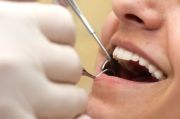 Teeth bonding or simply bonding in the dental world is a well-known teeth restoration procedure that can bring back that lost spark to teeth that have suffered due to chipping, cracking, decay, discoloration, and the usual wear and tear.
Teeth bonding or simply bonding in the dental world is a well-known teeth restoration procedure that can bring back that lost spark to teeth that have suffered due to chipping, cracking, decay, discoloration, and the usual wear and tear.
The procedure involves applying a composite resin, which is a plastic-like material, to teeth to restore its original look. The best thing about teeth bonding is that it can be done in a single visit to the dentist. The term “bonding” is taken from the process of bonding the said material to the tooth.
Before getting a teeth bonding procedure done, it is wise to get all the facts pertaining to this particular procedure. This will help make sure you have a clear understanding of how the procedure will be done and whether the procedure will really help you solve your dental problems. Getting the facts can help you set your own expectations from the procedure.
The Facts about Teeth Bonding
- Why get a bonding
- How the procedure works
- Some risks to consider
1. Why get a bonding
Teeth bonding is a very effective restorative dental procedure. Although there are other procedures that can do what a bonding can do, a lot of people prefer to go with tooth bonding because it is known as the most affordable procedure of its kind. It is also the easiest and the most hassle-free since the process can be done in just one session. And although bonding is already classified as a cosmetic dentistry procedure, it is still within the means of several dental patients.
A bonding can solve many different dental problems. If you have chipped, cracked, decayed, discolored, or misshaped teeth, a bonding can help remedy the problem. Bonding can also help fill in uneven or too wide gaps in between teeth. A bonding can be an alternative to veneers and to amalgam fillings.
2. How the procedure works
A teeth bonding procedure begins with a planning session with your dentist wherein the correct and exact shade of the composite resin to be used will be chosen. This color will be matched to the color of your teeth. Usually, the material is shaped and polished so that it will also match the luster and the shape of your actual teeth.
Once this is done, the dentist will etch the tooth surface slightly so that the teeth will become rougher. Then it will be coated using a special conditioning liquid. This will be the main adhesive that will bond the resin material to the teeth. Then the resin is applied. The dentist will then mold and smooth out the resin to make sure that it has the right shape. After that, the dentist will use a laser or a UV light to harden the material. If your original teeth are shinier than the resin, your dentist will polish the bonding material to make sure it matches the shine of your teeth.
3. Some risks and downsides to consider
There are some problems that can be encountered after a teeth bonding procedure. The bonding material will definitely not match the strength of natural teeth. If you chew or bite hard food or drink a lot of coffee and soft drinks, these can lead to breakage or discoloration of the bonding material. Thus, the longevity of dental bonding depends mainly on how you take care of it.
The Difference between Veneers and Teeth Bonding
Technically, the process of dental bonding, its uses, and its results, are similar to those of veneers. However, bonding is a more basic method because it is simpler to do. Veneers are custom-fitted and have to be first created in a dental laboratory, which means you have to go to the dentist for measurements then come back for the actual procedure. Bonding, on the other hand, can be done by your dentist in a single visit. This is why bonding is a cheaper alternative to dental veneers.
